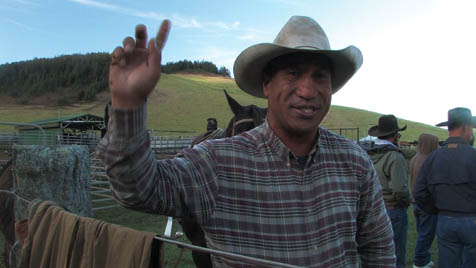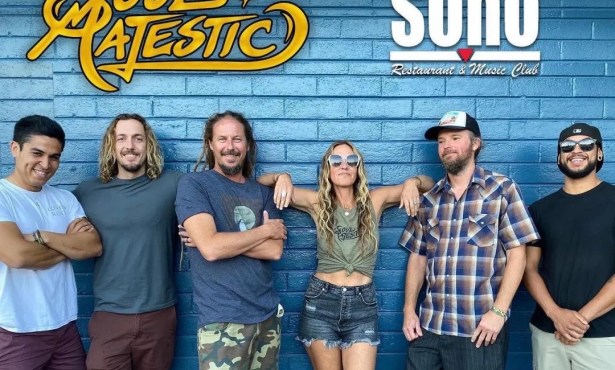Vaquero Legacy in Hawai’i Unveiled
Aloha, Cowboy

Think Hawai’i-surfing, sand, sun, hula, and pineapples, right? Better add cowboys to that island mix, because the 50th state is home to one of the proudest horse-riding and cattle-corralling cultures in the world, a ropin’ ‘n’ wranglin’ tradition that harkens back to the 1800s and persists today on some of the largest ranches in the United States. So where did these Hawaiian cowboys-or paniolos, as they’re known-learn the trade? From Central California’s vaqueros, of course, the stylish and skilled horsemen who’ve influenced ranch hands across the world.
That’s the tale told in Holo Holo Paniolo, a new documentary by Summerland’s Susan Jensen and Paul Singer that premieres Friday, November 2, 6 p.m., at the Santa Ynez Historical Society Museum. Part three of the couple’s ongoing film series about the vaqueros’ legacy, Holo Holo, is an interview- and information-packed hour-and-a-half romp through paniolo life that’s perfectly suited for lovers of horses and history alike. Their previous feature-length films include The Remuda, about how vaqueros influenced the Great Basin’s buckaroos, and Tapadero, about the evolution of the California vaquero. (They also made a shorter 35-minute film called Vaquero.)
As New York City advertising professionals, Jensen explained last week, “I always wanted to be a documentary filmmaker, and Paul always wanted to be a cowboy, so here we are.” They thought this project would be quick and easy, but after one trip to the Big Island, where the paniolo tradition began, they realized they were in for the long haul. “Once we got over there,” said Jensen, “we found out it was a much bigger story.” Six weeks and three trips later, they’d interviewed dozens of folks, traveled to five islands, and gotten to the bottom of the paniolo legacy. The result is the most comprehensive ode to the paniolo ever.
“We’re horse people, by the way,” joked Jensen. And it shows, as the interviews are interspersed with lengthy takes capturing what cowboys do best: roping skittish calves, moving stubborn cattle, and riding bucking broncos. “I really like the history too,” said Jensen, “but I have to restrain myself once in awhile [from showing too much horse action].”
The educational component is far from lacking, however. The viewer learns that Molokai is the “most Hawaiian of them all”; that Maui’s cowboys are working toward organic, grass-fed beef and enticing the island community to support their homegrown meat in hopes of saving their tradition for future generations; and that on Kauai, the paniolo tradition is undergoing rebirth because old sugar plantations are becoming rangeland. But the most vibrant community remains on the Big Island, where three vaqueros from Monterey came to teach the Hawaiians how to round up their wild cattle and turn them into a reliable food source.
Despite their own historical strides-like the jaw-dropping 1908 mainland rodeo win by legendary Hawaiian horseman Ikua Purdy-the paniolos still relish their origins, said Singer. “The first thing they tell you is the story of the vaquero!” he exclaimed. And the influences are obvious: The saddle is an evolved vaquero seat, made to go into the water more easily; the slack-key guitar tradition is a remnant of the vaqueros’ leftover Spanish guitars; and even the word paniolo is a bastardization of espa±ol.
But for Singer, this isn’t just about the past-it’s about showing that cowboy life continues, despite popular conceptions otherwise. “A lot of people think that the cowboy is dead and gone,” said Singer, “but far from it. We’re trying to show that the cowboy is alive today. It’s still going forward, and a lot of young people are coming into it.”
Holo Holo Paniolo is all the evidence he needs, as the younger Hawaiians are enamored of the country life, one that keeps them close to their land and reinforces traditional ways. It’s a way of living that many lost in the big city’s hurried pace could sure learn a lot from.
4•1•1
Holo Holo Paniolo premieres on Friday, November 2, 6 p.m., at the Santa Ynez Historical Society Museum, 3596 Sagunto St. A reception starts at 5:30 p.m. See tapadero.com.



